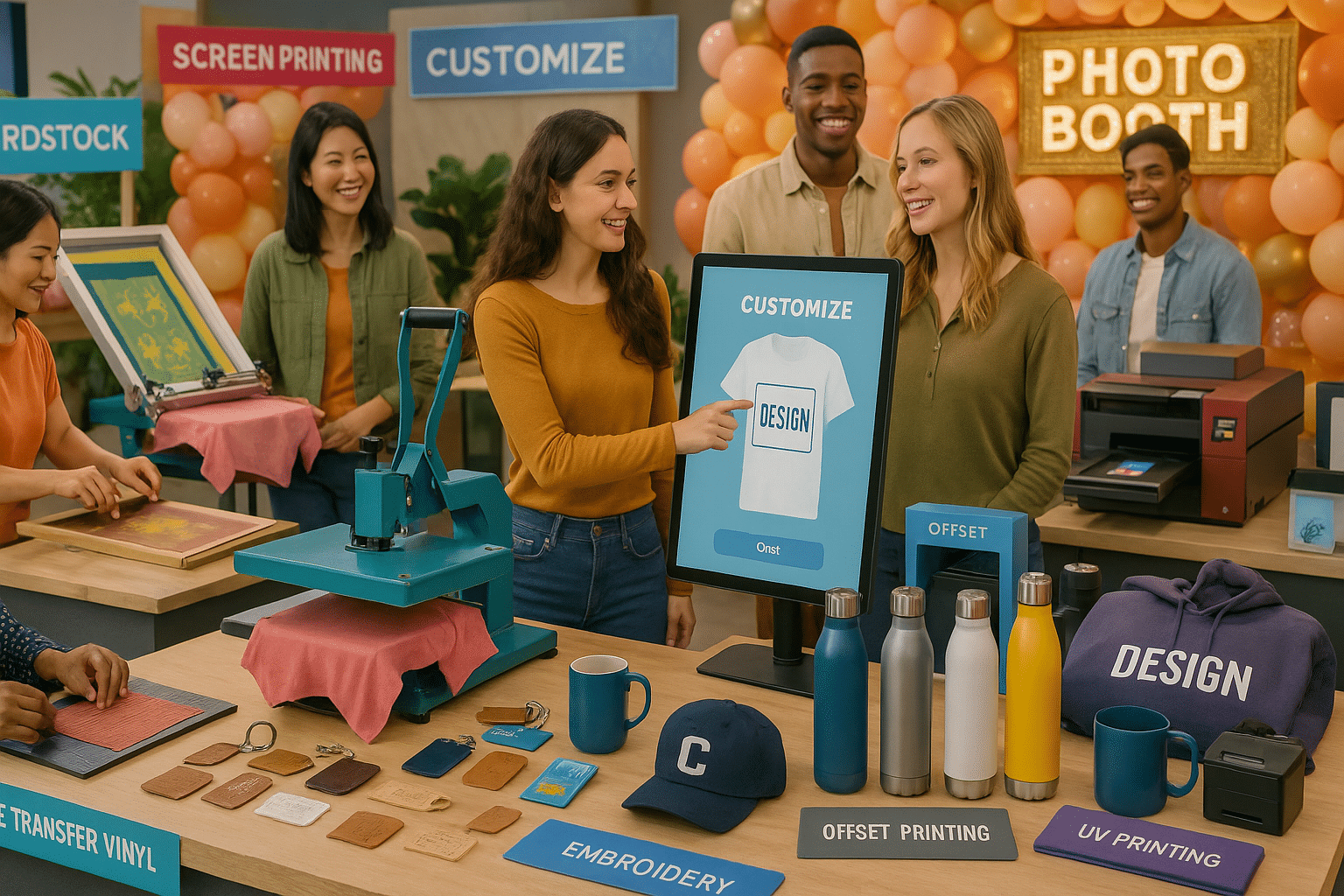Ultimate Guide to Event Planning: Tips, Trends, and Success Stories
Ultimate Guide to Event Planning: Tips, Trends, and Success Stories

Event planning requires creativity, organization, and awareness of current trends. From leveraging interactive elements to crafting DIY projects, this comprehensive guide explores essential tips, marketing strategies, and behind-the-scenes insights for successful events. Dive into innovative ways to enhance your gatherings, including how to incorporate customized products like photo booths and branded merchandise.
Crafting Memorable Experiences through Event Planning
When planning an event, the first step involves understanding your target audience. Different types of events cater to distinct demographics, meaning that knowing who you are inviting will guide your decisions in many areas, from the theme to the menu. Are you hosting a wedding where love and romance take center stage, a corporate gathering aimed at networking and professional development, or a lively festival designed to entertain a community? The answers to these questions will help shape the planning process and ensure that your event resonates with the attendees.
Setting a budget is another fundamental element of event planning. This financial blueprint serves as a foundation upon which all other planning rests. Having a clear budget allows you to make informed decisions about venue selection, catering, entertainment, and the various amenities that can enhance the overall experience. For instance, while exploring options for interactive elements like a photo booth, it’s essential to weigh the potential costs against the value they bring to the event. When considering hiring a photo booth, the price will vary depending on the service provider, the duration of rental, and any extra features, such as props or backdrops.
Selecting the right venue is crucial for any event. The venue not only sets the mood but also impacts the logistical aspects, such as parking and accessibility. For a wedding, a scenic outdoor venue might create a romantic backdrop, while a corporate gathering might benefit from a professional atmosphere found in conference centers or hotels. Having a location that aligns with the event’s theme and accommodates your expected number of guests will greatly enhance the experience.
As part of the planning process, vendor coordination is key. Reliable vendors are vital to a successful event, and building relationships with trusted suppliers—from caterers to florists and photographers—can simplify logistics. When hiring a photo booth vendor, it is worth investigating their reputation, expertise, and flexibility regarding customization. Ensure they can meet specific needs, such as themed layouts or instant sharing options for guests. Just as you would inquire about food allergies with a caterer, be sure to ask about inclusions and potential add-ons when discussing your photo booth options.
Time management also plays an integral role in event planning. For weddings, scheduling is paramount—allocating enough time for the ceremony, reception, and any additional activities, like speeches and toasts, is essential for keeping the event flowing smoothly. Conversely, for corporate events, having a clear agenda with time slots for networking, breakout sessions, and keynote speeches can maximize engagement and productivity. It’s also important to consider the time of year; for instance, summertime might be ideal for festivals, while winters are often preferred for holiday parties and indoor gatherings.
As guests arrive at your event, creating interactive elements will keep them engaged and entertained, enhancing their overall experience. A photo booth is a popular choice for all types of events, offering a fun activity while also serving as a unique keepsake. When planning to hire a photo booth, consider what type of experience you want to create. Do you want a traditional enclosed booth that captures fun poses and silly expressions, or a modern open-air setup that allows for group shots with props? The cost of a photo booth will fluctuate based on its features, so comparing options can help you find one that fits both your budget and vision.
Incorporating branding into your event can help solidify your image and enhance recognition among attendees. If your brand is evident through custom items, such as thermal bottles, mugs, or even hoodies, it allows guests to take home something tangible that reflects the event and your brand. These items not only make for practical giveaways but can be customized to include your logo and event details, doubling as marketing tools.
As you think about creating a memorable atmosphere, don’t forget to consider the aesthetic elements of the venue. Using themed décor, colorful centerpieces, and cohesive color schemes can enhance the guest experience. Interactive spaces, such as taking photos in front of a branded backdrop at the photo booth, can add a fun and engaging factor, drawing guests into the experience.
Taking the time to think through each of these components will lead to a successful event. Gathering inspiration from previous successful gatherings can provide valuable insights into what works well—consider speaking to others who have hosted similar events or looking at case studies. By showcasing a wealth of examples, you can inspire creativity and connect with current trends, ultimately allowing your event to stand out.
In the realm of DIY inspiration, involving attendees through participatory activities can create a unique atmosphere. Setting up stations where guests can customize their own luggage tags or create personalized keepsakes, such as laser-engraved products, can add a hands-on element. These activities not only foster creativity but also allow guests to engage more deeply with the event and one another.
As you wrap up your planning, ensure that the elements of your experience come together cohesively. A well-executed event is the sum of its parts—from engaging entertainment and cohesive branding to thoughtful logistics and interactive elements. Providing guests with branded items, setting up efficient vendor coordination, and engaging them through a lively and fun photo booth experience will go a long way toward crafting a celebration that guests will remember long after the last dance is over.
Conclusions
To sum up, successful event planning hinges on creativity, effective marketing, and the strategic use of interactive elements. By embracing DIY inspiration and leveraging modern trends, you can create unforgettable experiences that resonate with your audience. Keep this guide handy as you embark on your next event planning journey, ensuring everything from logistics to branding is top-notch.




